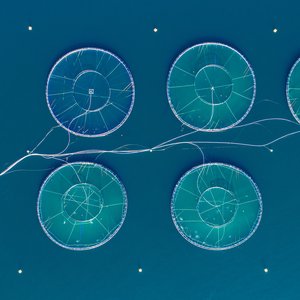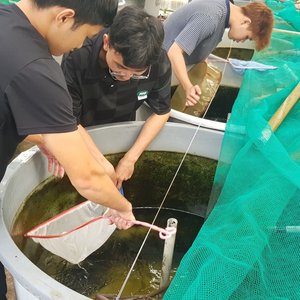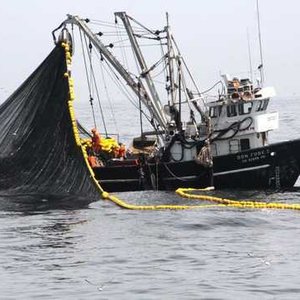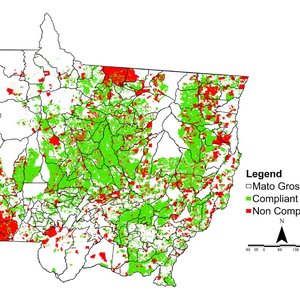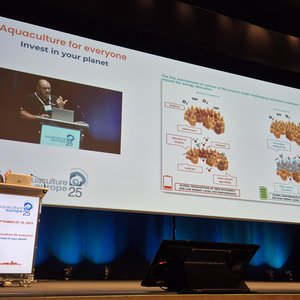The Global Salmon Initiative (GSI), in partnership with the World Wildlife Fund (WWF), launched a first-of-its-kind environmental, social, and governance (ESG) risk assessment tool for feed ingredients. The tool will improve visibility into supply chains, allowing stakeholders to better identify and address possible ESG risks. GSI and WWF designed the tool to support the salmon farming sector, but the wider animal protein production sectors, including livestock, may also benefit from its use.
The tool provides a consistent and aligned framework for farming companies to engage with their respective feed suppliers in order to get a holistic overview of possible risks in the feed supply chain. These risks could include biodiversity loss, climate change, resource use, environmental footprint, health and welfare, nutrition, human rights, and governance, among others. It can also help companies assess the scalability of future novel ingredients. With this knowledge, companies can make more informed sourcing decisions aligned with their strategic priorities and values. The tool, developed over a three-year period in consultation with the GSI members, WWF, and industry feed companies, is the first time a common methodology is available to support greater alignment in feed data collection.
“Feed ingredient sourcing remains one of the main sustainability challenges in salmon farming, and food production more broadly,” said Daniel Miller, aquaculture lead specialist at WWF. “The surprising amount of unknown information in feed-ingredient supply chains leaves the sector open to unintentional risks and vulnerabilities—even for companies prioritizing sustainable, ethical production. With this tool, GSI members are taking a proactive approach to address these risks and identify opportunities to improve the supply chain. Looking at supply chains broadly and holistically doesn’t just mitigate risk; it also facilitates more informed and strategic decisions.”
“We know we need to improve the level of transparency and traceability in our supply chains. Not only for our own knowledge but also to provide feedback and assurances to our stakeholders whether customers, regulators, communities or long-term investors that we are sourcing from responsible and sustainable sources. By developing a common tool so producers can all ask the same questions of the supply chain which will streamline requests and improve the level of traceability, ultimately supporting accelerated improvements in the sustainability of the ingredients being used for feed,” said Tor Eirik Homme, director of feed and nutrition, Grieg Seafood.
“This tool isn’t designed only for farmed salmon, or even just aquaculture, we see it having a critical impact across the animal protein production sectors, and even pet food, that all share many of the same supply chains and risks. While GSI has taken the first step to develop and trial the tool, we will now be working with other WWF partners to expand its use,” added Miller.
“Sourcing feed ingredients from diverse supply chains makes it challenging to identify and mitigate all the current and potential ESG risks of our global operations. We’ve made significant progress over the past few years in addressing many of these risks, but we have more work to do and our pace needs to accelerate. We support the implementation of the ESG tool because it will help us better identify what we know and what we don’t know about the impacts of certain ingredients, and in addressing these concerns, we will increase the transparency in our sourcing and ultimately improve our performance,” added Jorge Diaz Salinas, sustainability manager at Skretting.
The Aquaculture Stewardship Council (ASC) has also reviewed the tool and intends to incorporate it as one of its due diligence mechanisms to be part of the ASC Feed Standard certification process.
In addition to the tool, WWF in collaboration with GSI and Grieg Seafood, released a business case, Feed of the Future: Transparent and Traceable. The paper outlines the challenges inherent in feed production, the development of the tool, and Grieg Seafood’s experience applying it to their supply chain.
The tool is in its first iteration and will be updated as companies begin to use it and collect insights into their supply chains. Additionally, annual amendments will ensure the tool continues to support and deliver on its intended purpose.
All data collected as part of the tool is confidential and only shared between feed suppliers and farming companies. By using the tool and identifying possible risks, the aim is to utilize this knowledge to encourage innovation, spur continued developments in the sourcing of feed ingredients to minimize ESG risk, and ensure farmed salmon continues to offer a healthy and sustainable food choice.



